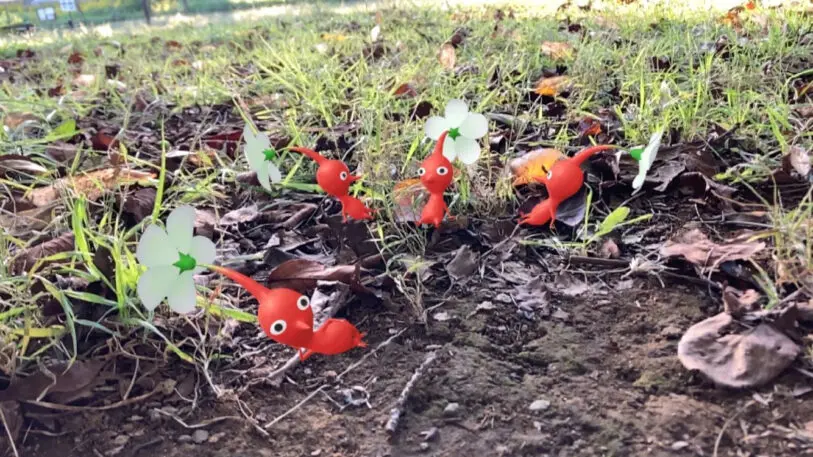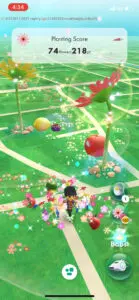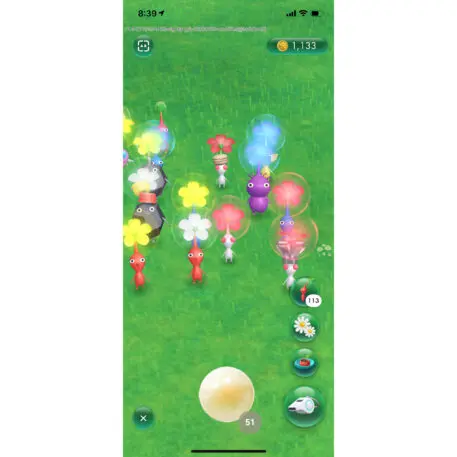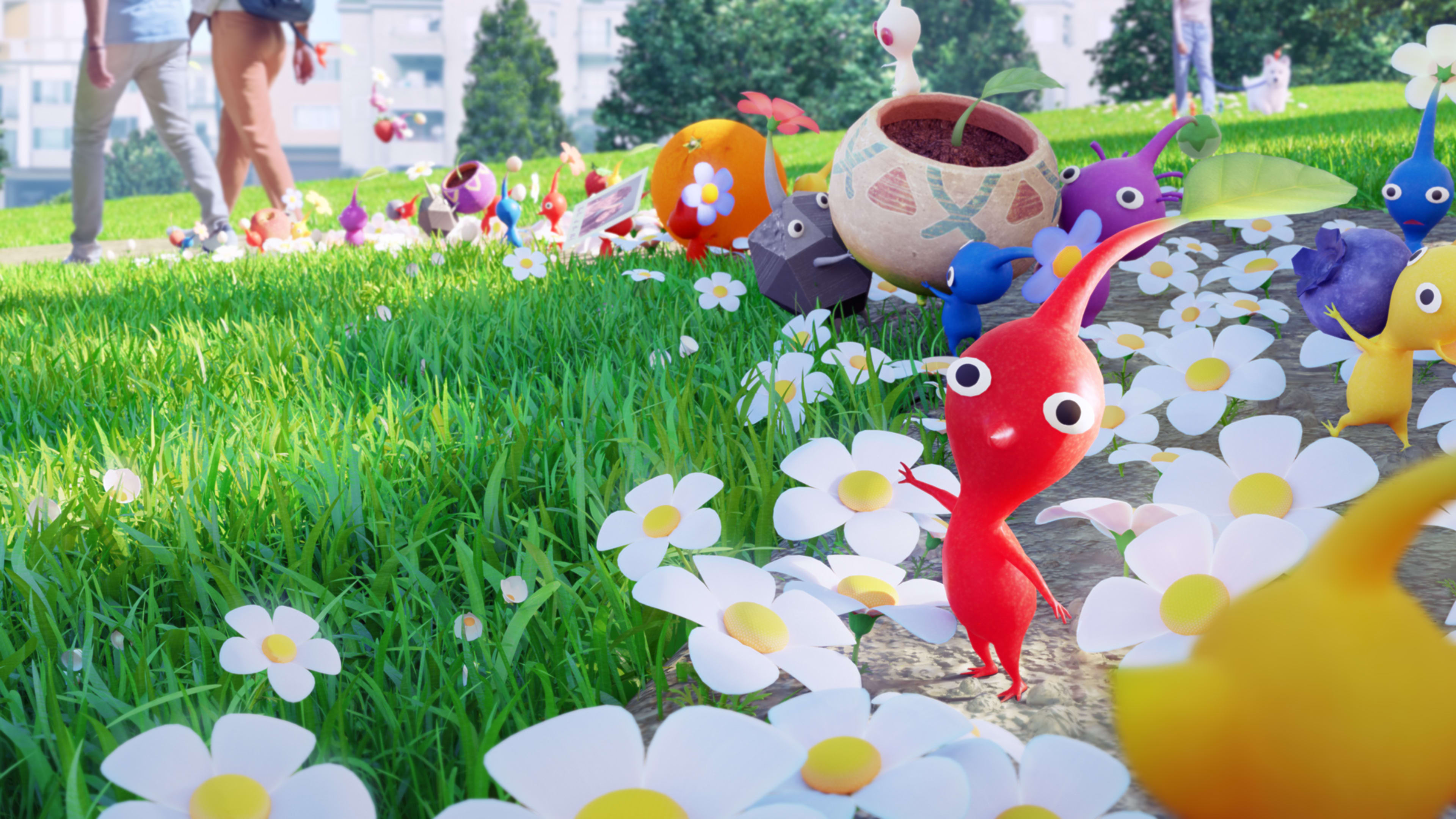After the runaway success of Pokémon Go, Niantic’s next AR smartphone game based on a Nintendo property will try to be a little calmer.
Today, the two companies are launching Pikmin Bloom on iOS and Android, based on an offbeat series of games for Nintendo consoles. Whereas Pokémon Go asked players to round up the game’s eponymous monsters at real-world hotspots, Pikmin Bloom is a more passive affair, in which players can grow plant-like Pikmin creatures whenever they go on a walk.
It’s the result of a three-year collaboration between Niantic and Nintendo, and an example of how Niantic wants to filter the world through the lens of augmented reality. Instead of trying to create virtual realities as Facebook, Epic Games, and Roblox are doing, Niantic thinks games like Pikmin Bloom can make the physical world slightly more pleasant.

Why Niantic picked Pikmin
Among all the Nintendo properties that Niantic could have used for its latest game, Pikmin isn’t an obvious choice.
While the series has developed a modest fanbase since the original Pikmin launched on the Nintendo GameCube in 2001, it’s never enjoyed the huge mainstream appeal of The Legend of Zelda, Animal Crossing, or any game starring Mario. The Pikmin console games could also be quite stressful, with players having to strategize how to best harness their Pikmin for resource-gathering while avoiding hazards and contending with a ticking clock.

“We loved the concept around Pikmin, how they build things for you, they collect things for you, and felt like that worked really well with Niantic’s principles and vision,” Katayama says.
Compared to the console games, Pikmin Bloom is decidedly more relaxed. While taking a walk, players can view a map of their surroundings and look for seedlings that sprout into Pikmin over time. The little characters will then follow the player around and deliver items, and players can nurture the Pikmin by feeding them nectar. Eventually, they’ll sprout flowers on their heads, dropping pedals that turn into flower gardens for all other players to see.
Some elements of the game will still be reminiscent of Pokémon Go, which challenged players to seek out rare Pokémon and compete with others. Players will occasionally see opportunities to gather special Pikmin that aren’t on their walking path, and Niantic plans to hold community events where players can gather and grow flower gardens together. (The monetization scheme will also be similar, with players able to buy seeds and planters to grow Pikmin faster, and Niantic hasn’t ruled out advertising as a future possibility.)
But for the most part, the game will be focused on reaping the rewards of taking more walks. The process of walking is what allows the Pikmin characters to grow, and at the end of each jaunt, players can view a step count along with a map of their route. They’ll also be able to take daily notes with text and photos, and send Pikmin-themed “postcards” to friends with photos they’ve snapped throughout the day.
“We really wanted to make sure that this was something that was not just desirable for gamers, but also for non-gamers as well,” Katayama says.
Growing the audience
The low-key nature of Pikmin Bloom—and the franchise’s obscurity relative to Pokémon—means it’s unlikely to cause the kind of frenzy that led to 500 million Pokémon Go downloads within its first few months of launch. Yet, there’s a sense that the project feeds into broader goals for both companies.

So for Nintendo, perhaps Pikmin Bloom is a chance to reframe a Miyamoto franchise that never got much love. Hanke notes that the two companies became “collectively excited” about making a new Pikmin game because of how it fit into Niantic’s walking companion concept, and that of all Nintendo’s contributions, its attention to the characters stood out.
“I think characters, and character design, and the importance of making the characters themselves so innately appealing, can’t be underestimated,” Hanke says. “I think they’re masters at that.”
As for Niantic, Pikmin Bloom is an attempt to establish a new style of augmented game. Pokémon Go largely took after Niantic’s first game, Ingress, and 2019’s Harry Potter: Wizards Unite followed a similar mold. (The Potter game was also criticized for its lack of original gameplay and stalled out shortly after launch, while Pokémon Go is still popular.)
Instead of creating another hyper-competitive location-based game, Pikmin Bloom is trying to be augmented reality entertainment for everyone. It’s a way, Henke says, for people to “embellish the world” with digital objects, rather than a constant distraction.
“It’s specifically designed so that you can pay attention to it a little bit, and then put it in your pocket,” he says.
Whether that idea will resonate with a large number of players is still untested, especially without the naturally addictive hook of catching Pokémon out in the wild. But much like the Pikmin themselves, Hanke believes the audience will grow naturally over time.
“I think it will find an audience that will make us happy,” he says.
Recognize your brand’s excellence by applying to this year’s Brands That Matter Awards before the early-rate deadline, May 3.
